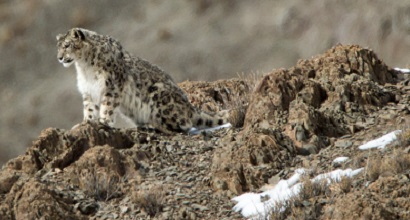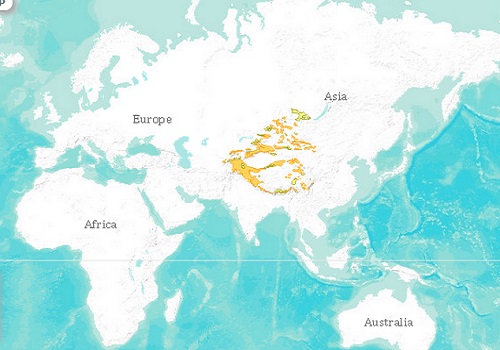0
Taxonomy

The snow leopard is considered a threatened species by the IUCN List of Threatened Species.
- Kingdom: Animalia
- Phylum: Chordata
- Class: Мammalia
- Order: Carnivora
- Family: Felidae
- Subfamily: Pantherinae
- Genus: Panthera
- Species: Panthera Uncia
0
Physical Features
- Despite their name, snow leopards (Panthera Uncia) are not the color of the snow. Their fur color varies from smoky gray to yellowish brown with black spots and rosettes. They stand out against the snow but blend with rocks.
- Their bodies have adapted to cold temperatures and mountain life. They have thick fur, small and rounded ears to minimize heat loss. Their paws are wide and covered in thick hair acting as snow shoes. Their tails are long and thick which they use for balance and as blankets when they sleep.
- Snow leopards have shorter front limbs and longer hind limbs which allows them to jump as far as 50 feet or 18 meters.
Weight and Height
- Their weight ranges from 27 to 55 kg or 60 to 121 lbs.
- Their length, from head to the base of its tail, ranges from 75 to 130 cm or 30 to 50 in.
Habitat and Distribution
- Snow leopards live at elevations from 3,000 to 4,500 m or 9,800-14,800 ft in the rugged mountains of Central Asia, specifically in Uzbekistan, Tajikistan, Russia, Pakistan, Nepal, Mongolia, China, Bhutan and Afghanistan. Their territorial range covers 2 million sq km about the size of Mexico.
- Snow leopards prefer to live in steep cliff and rocky areas and ravines.
- China has 60% of the snow leopard habitat. They have disappeared from areas such as Mongolia.

Snow leopard distribution map. Source: IUCN Red List of Threatened Species.
Social Behavior
- Snow leopards have small voices relative to their size, they cannot roar but the can hiss, chuff, mew, growl and wail.
- They are solitary animals, except for females with cubs.
- Like other animals, snow leopards use scent marks to indicate their territory. They scrape the ground and deposit urine or scat (faeces).
- Snow leopards are more active at dawn and dusk.
- Attacks on humans are rare.
Diet
- Snow leopards are carnivores but also eat vegetation. They feed on wild sheep and goats, rodents, hares and birds.
Breeding
- Snow leopards mate in late winter. They start mating at 2 to 3 years old.
- Their gestation period is 90 to 100 days with most cubs being born between April and June.
- Mothers give birth from 1 to 5 cubs. They prepare their den with their own fur.
The Young
- Cubs are blind at birth, their eyes open at around 7 days.
- They can walk at 5 weeks and are weaned by 10 weeks. They leave the den at 2 to 4 months.
- They remain with their mothers for 18 to 22 months.
Life Expectancy
- Their lifespan is 14 to 18 years in the wild and up to 21 years in captivity.
Threats
- People are the biggest threat to their survival. Poachers sell their bones and hide for thousands of dollars. Body parts are used in traditional Chinese medicine.
- Snow leopards are predators of domestic livestock which brings conflict with humans.
Conservation Status
- Snow leopards are listed as “endangered” on the IUCN list of Threatened Species. It is believed that only 3,000 to 7,000 snow leopards live in the wild. No one has an exact count because they live in remote and difficult to access areas.
- There are about 600 cats in zoos around the world.
Did you know?
The snow leopard is the national symbol of Tatarstan, Kazakhstan and Pakistan.
